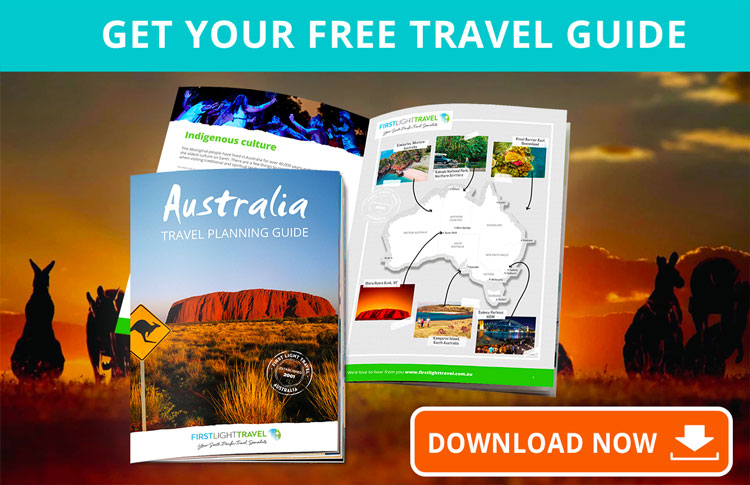Tips & Tricks when packing for your Australian Holiday.
General Guidelines on Packing
Clothing should be lightweight, hard-wearing and easy to wash & dry.
Almost everyone brings too many clothes, so try to travel as light as possible.
If you are travelling in high summer (January to March) loose-fitting clothing will help you to keep cool.
In Australia you can experience 4 seasons in 1 day - especially in Tasmania!
Pack, Don't Stuff
When packing for your Aussie holiday, don’t pack your bags too full. Not only do over-packed bags place undue stress on locking mechanisms, they are also difficult to re-pack throughout your holiday. Not to mention that you’ll have nowhere to put any souvenirs you buy along the way.
Cross-Packing For Peace Of Mind
Travelling with a companion? We recommend “cross-packing”: pack 2 outfits of your clothing in your companion’s luggage and vice-versa, in case one bag is delayed or lost.
Roll, Don't Fold
Tried-and-tested by our team, rolling saves more space than folding and prevents creasing. Anything fragile should go in a garment bag and laid flat on top. If you can, leave it on the hanger (preferably a slim, plastic one) - then you can just hang it up as soon as you arrive.
Stuff Your Shoes
Use every inch of space and prevent shoes from getting damaged by stuffing them with socks and underwear. Then place each pair of shoes inside a dust bag.
What to Wear on holiday in Australia
Australian Dress Code
Australia is typically an informal place, so bring plenty of comfortable, casual clothes. Most bars and restaurants have a smart-casual dress code.
Men are generally not expected to wear suits and ties, except in a few of the top formal bars and restaurants in major cities.
If you read a sign saying: "No thongs" don't panic - it's another word for flip-flops, jandals, pita-patas, etc, depending on where you are from.
Keeping Warm: Packing Clothes for Winter in Australia
If you are visiting our alpine regions of Tasmania, Victoria, New South Wales, or travelling in the Australian winter - the best way to beat the cold is by wearing two or three thin layers of clothing, rather than one thick layer.
Why does this work? Air trapped between layers is warmed by the body, creating instant insulation from the effects of the cold.
Jerseys, camisoles and underwear help "wick" moisture away from your body and can act as your first layer. For your second layer, you might want a sweater. A third layer, if necessary, may be a cardigan-type jacket made of waterproof synthetic or a lightweight down vest.
Finally, it is important to have a warm covering for head, hands, and feet.
What it's like to visit Australia in Winter
What to wear in the Australian Summer
Just 15 minutes in the Australian summer sun can cook you. Temperatures can be low but the ultra-violet rays are vicious. Wear a hat, sunglasses and a high SPF sunscreen.
Cotton and linen clothing keep you well covered while providing ventilation, and paler-coloured fabrics reflect both light and heat to keep you cooler.
Visiting Australia in summer: what to expect
Shoulder Season: Packing for Spring or Autumn (Fall) in Australia
Travelling during shoulder season, and wondering what the weather will be like? It's anybody's guess, really - you can have a chilly Spring or a scorching hot Autumn, or vice versa. Again, layers of lightweight clothing are your best bet - you can throw them on and take them off as the temperature changes.
Further reading: visiting Australia in spring and travel tips for Australian autumn
Footwear
It is important to bring footwear that is suitable and also comfortable.
Shoes, sneakers or sandals that you can walk in all day will serve you well anywhere: a city sightseeing holiday can be almost as hard on the feet as a week in the Top End wilderness!
If you are hiking we recommend sturdy walking shoes or hiking boots. Wear them in before you travel, and you should also bring spare laces.
Sport sandals, boating shoes or beach footwear are ideal for beach and coastal holidays and much more besides. Flip Flops, Thongs, Jandals - whatever they are called where you come from - are great for both the beach and for hotel bathroom floors!
As well as clothing, what else will you need to pack for your dream holiday Down Under?
Documents to Bring With You...
Travel Documents & Vouchers
When you book a tour, you usually receive a Confirmation Itinerary. Check that all the services which you have booked and paid for are shown correctly. Don’t forget to bring your valid passport and if required a visa for your journey.
Australian Passport and Visa Requirements
Driving Licence
If you're planning a driving holiday in Australia, bring your licence with you. The law here requires all drivers to carry their licence or permit when driving. Drivers with a non-English language licence must carry an accurate English translation of their licence or an International Driving Permit while driving.
Scuba Diving
All persons wishing to scuba dive must take their Certification Cards with them as well as their Dive Log Book as these will be examined.
Pro Tip: Make Copies Of Your Documents
Make a note of your passport details (passport number, visa number and place and date of issue of both). You can just take a photo from your phone and store it in the Cloud. This makes life so much easier if you do happen to lose your passport.
Toiletries & Medication
Stock Up on Basic Meds
When your body relaxes, it often lets down its defences. Don't let a cold ruin your holiday - pack a cold remedy for the flight and stock up on tissues and painkillers at the airport.
Read our guide to bringing medication to Australia from overseas
Save Space: Buy Bulky Toiletries When You Arrive In Australia
Unless you are highly attached to your favourite brands, you don't need to pack your entire bathroom cabinet: You can buy shampoo, soap, shower gel etc when you arrive.
Australian sunscreen is specifically formulated to protect against the harsh sun here - there are strict regulations governing sunscreen quality - so it's a good idea to invest in some when you get here. Buying insect repellent in the country you're holidaying can also be better than bringing your own from home - it's formulated to repel the local insects!
Suggested Packing List
General Clothing
- 1 pair jeans
- 2 pair light-weight trousers
- 2 pairs shorts (or a skirt)
- 3-4 Shirts (think layering for colder days; quick-dry clothes are best)
- 2 button up front long sleeve shirt
- 1 sleep shirt & sleep shorts (or whatever you sleep in)
- 1 light sweat shirt or long-sleeve t-shirt
- 1 swimming suit
- underwear and sleepwear
- 4-5 pairs socks both thin and thick
- 1 pair walking boots or comfortable walking shoes
- 1 pair sport sandals (like Teva's)
- 1 Polar Tec or similar fleece Jacket (preferably water resistant/windproof jacket)
- warm rain jacket or lined windbreaker with hood
- 1 pair "hiking" boots or good walking shoes
- 1 or 2 changes of smart casual clothing for restaurant dining
Outdoor Clothing
- 1 Polar Tec or similar fleece Jacket (preferably water resistant/windproof jacket)
- non-cotton base layers (top and bottom); choose fabrics such as polypropylene, Capilene or Thermax
- rain jacket and pants (preferably water and wind proof or resistant)
- 1 pair "hiking" boots or good walking shoes
- heavier socks
- sandals (preferably waterproof)
- collapsible walking staff
- scarf or bandanna
- 1-3 pairs long pants (when the sun goes down this will protect from biting mosquitoes & sour dough)
Documentation
- passport
- Travel Insurance
- travel documents – flight tickets/vouchers and Itinerary
- dive certification cards
- dive log book
- drivers license
Other Items
- motion sickness tablets (if you require them)
- Insect repellent (with Deet)
- sunscreen lotion
- sunglasses
- brimmed sunhat
- medications and copies of prescriptions
- sunscreen and lip ointment
- toiletries
- chargers for your electronics
- current converter and Australian power adapter
- daypack
- travel alarm clock, or watch with alarm
To Sum Up: Final Tips
Take only the ‘Bare Necessities’ :) - it’s so much more comfortable to travel light.
Save space by rolling your clothes, stuffing your shoes and leaving toiletries at home
Beat the cold AND the heat by packing clothes you can layer over eachother easily
Make copies of all essential documents and store them in the Cloud
Remember: Australia is a modern country and if you forget anything, you will be able to purchase it locally.
More articles to help you plan your trip to Australia
Getting to Australia
What is the Best Time to Visit Australia
How Long Should I Visit Australia For
Smooth as possible on arrival to Australia
Travel Insurance for Australia
Driving in Australia
Safety in Australia's Great Outdoors
Australian Accommodation Guide
Australia's Need to Know Facts
What do things cost in Australia
Since 2001 we’ve been helping visitors plan their dream Australian holiday. We aim to make visiting our beautiful land effortless. Let our expert holiday planners put together an itinerary for you, no obligation FREE of charge, or get some friendly advice on what small group tour would suit - Just follow the link and answer a few brief questions



